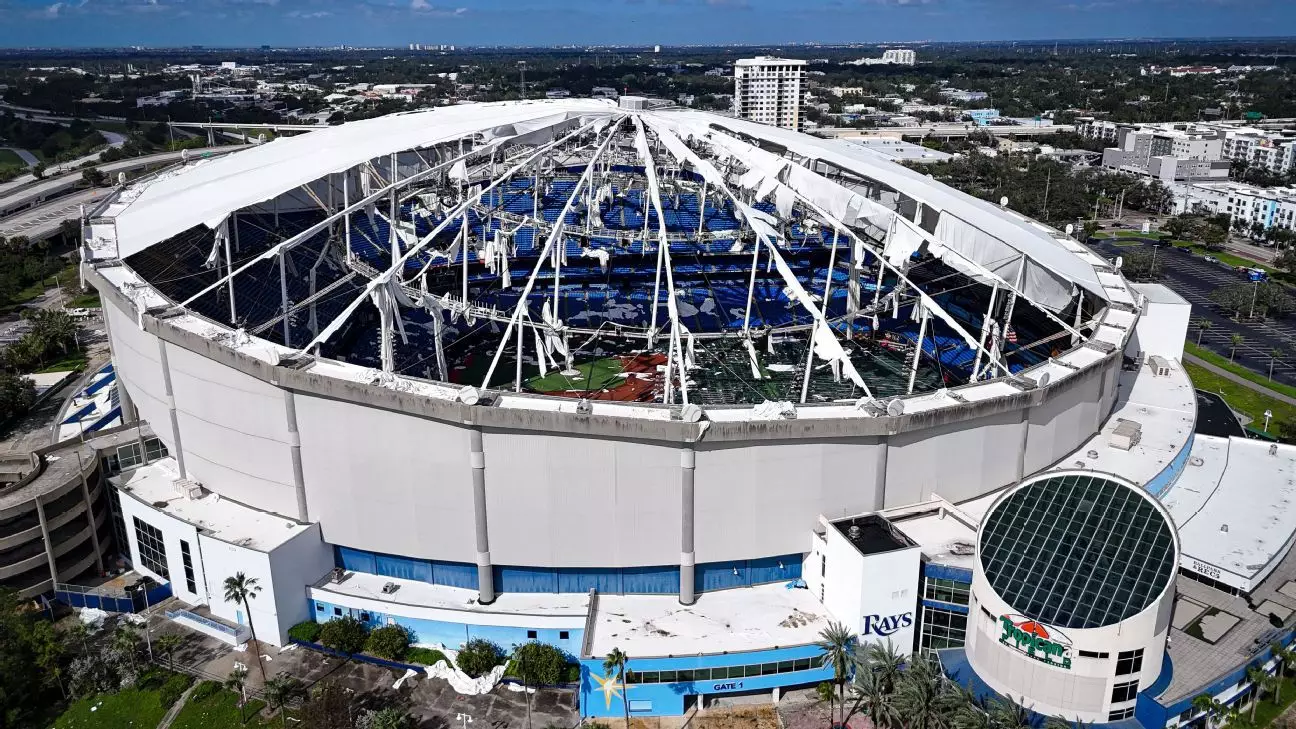The Tampa Bay Rays have recently vocalized their support for a significant $55.7 million repair initiative aimed at rejuvenating Tropicana Field, following extensive damage from Hurricane Milton. As the Rays gear up for an upcoming season at the New York Yankees’ spring training venue, Steinbrenner Field, in Tampa, questions linger regarding the future of the current stadium and the team’s long-term plans for a new facility. This article explores both the immediate challenges associated with repairing Tropicana Field and the overarching plans that may impact the team’s future in St. Petersburg.
In a recent communication to St. Petersburg’s chief administrator, Rays co-president Matt Silverman emphasized the critical nature of the repairs needed, particularly ahead of the anticipated 2026 season opener. The intensity of Hurricane Milton’s grip on Tropicana Field led to severe damage, effectively leaving the stadium exposed to weather elements. The urgency of starting reconstruction work stems not just from a desire to restore functionality but also from the inconveniences a partial season could pose. Silverman aptly notes that any disruption in logistical aspects and subsequent revenue generation could significantly harm the franchise’s standing. The pressing need for repairs underlines the complex nature of sports infrastructure in the wake of natural disasters.
While the Rays assert their commitment to the reconstruction of Tropicana Field, the financial implications of such an endeavor weigh heavily on St. Petersburg. The city has been tasked with financing the repairs, adhering to a contractual agreement with the team. However, rising costs may foster dissent among city council members, especially as the community continues to rebuild post-Hurricane Milton and the earlier Hurricane Helene. Mayor Ken Welch has brought the potential for insurance and federal relief funds into the discussion, indicating a preference for these sources to ease the burden on taxpayers. As the city grapples with balancing financial responsibilities against public needs, the situation showcases the complexities local governments face in funding sports facilities.
Despite the immediate necessity to repair Tropicana Field, long-term plans are already in the works for constructing a new $1.3 billion ballpark. This initiative promises to usher the Rays into a new era by providing a modern facility, benefitting not just the team but also the community at large. The proposed venue will be situated in the Historic Gas Plant District, a once-thriving community that has faced significant upheaval over the years. The development plans extend beyond just sport; the district is envisioned as a multifaceted project blending residential areas, cultural centers, and commercial spaces. This broader vision highlights a shift towards community rejuvenation, aligning with contemporary urban development trends that prioritize inclusivity and accessibility.
Another layer of complexity is added by Major League Baseball, which has plans to oversee the repair process closely. Silverman noted that the league will appoint an adviser to track the repair’s progress, ensuring that the work aligns with both timeline and quality expectations. This move reflects the heightened scrutiny and standards that Major League Baseball holds for its franchises, particularly as teams navigate Nashville’s evolving relationship with their fans, cities, and infrastructure.
With the restoration of Tropicana Field scheduled ahead of a new stadium’s commencement, the Tampa Bay Rays find themselves at a pivotal intersection. The urgency of repairs, the city’s financial challenges, and the promise of a new beginning underscore the complexities of maintaining a professional sports team. As the Rays gear up for the future, they retain an obligation to commemorate and embrace the legacy of Tropicana Field while transitioning towards a modern facility that complements the evolving fabric of St. Petersburg. The dialogue surrounding these developments isn’t merely about a building; it speaks to the community’s resilience, aspirations, and the undying spirit of its sports fans.
Overall, as the Rays prepare to reenter Tropicana Field, the upcoming years will be crucial in shaping both the stadium’s present and the team’s future.

